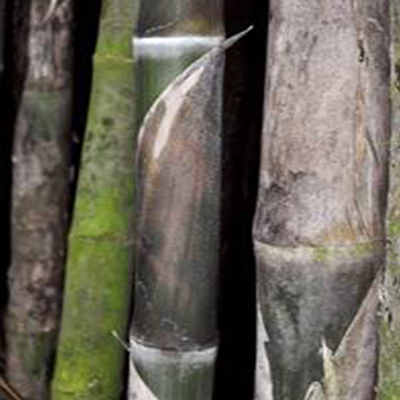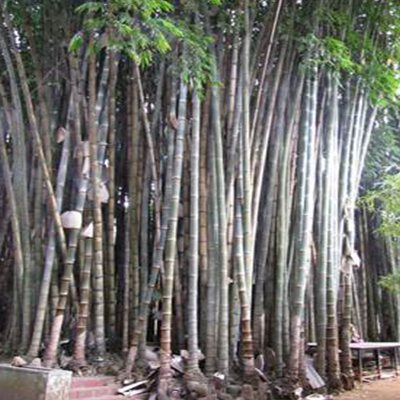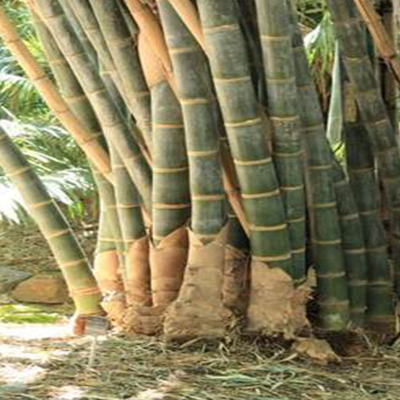35. Gigantochloa albociliata (Munro) Kurz
Local names
Assam: Kalisuneti
General description
Gigantochloa albociliata is an evergreen, clump-forming, perennial bamboo growing from 6 - 16 metres tall. The erect, thick-walled, woody culms are 15 - 70mm in diameter with internodes 15 - 60cm long. The plant can shed its leaves during dry seasons. Culm-sheaths10-20 cm long and ca.15 cm broad, covered with dense appressed hairs in the early stage, afterwards smooth, somewhat truncate, folded and coriaceous at the base, Inflorescence a large spreading panicle of spicate branchlets; rachis smooth, slender, 2.5-7.6 cm long between the verticils; spikelets slender, 1.5-2 cm long, often curved, 2.2 mm broad, fertile flowers mixed with few sterile ones. Stamens long, exserted, filaments at first connected in a short thick tube, afterwards into a long and membranous one; anthers long, greenish-yellow, long hirsute, apiculate. Ovary narrowly ovoid, much acuminate, pubescent, ending in a long style divided above into 2 white stigmas. Caryopsis elongate, oblong, cylindrical and acuminate. It has been reported to have flowered in Assam during 1956-60 and in 1987. A flowering cycle of about 30 years has been reported from India.
Habit and Habitat
Tree form. The plant is common in low elevation mixed forest, but does not enter savannahs.
Distribution
Myanmar, Thailand, India- West Bengal, Arunachal Pradesh, Assam, Meghalaya.
Uses
Young shoots are eaten as a vegetable. The woody culms are used in light construction, as trellises for climbing vegetables, for fence construction, tool handles, furniture, woven wares and as raw material for paper and board.



